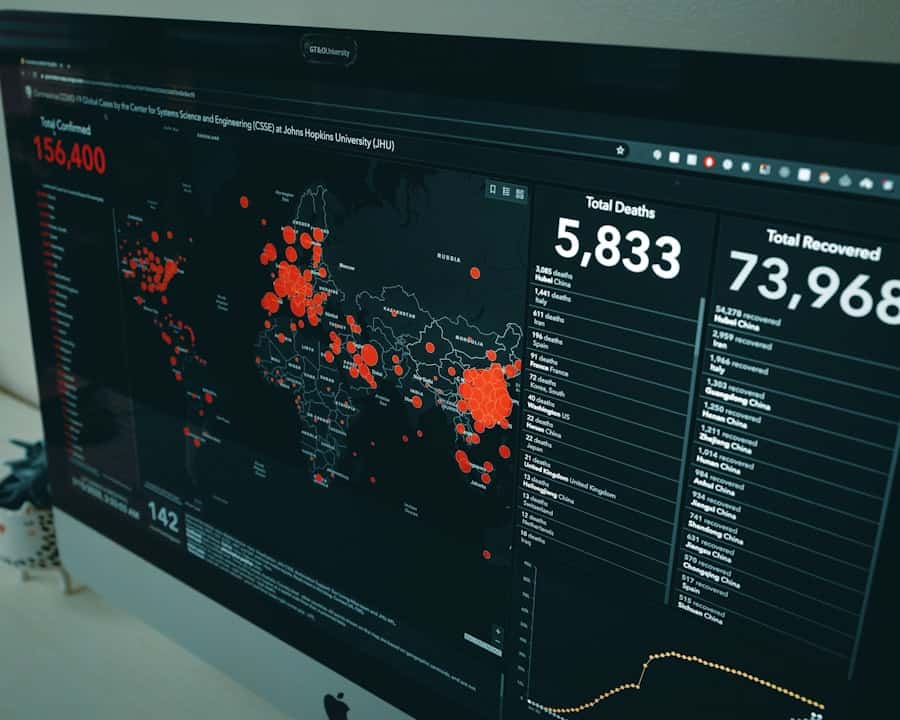Artificial Intelligence (AI) has emerged as a transformative force across various sectors, and its potential to address climate change is particularly noteworthy. Climate change, driven by human activities such as fossil fuel combustion, deforestation, and industrial processes, poses significant threats to ecosystems, human health, and global economies. The urgency of mitigating these impacts has led to an increased interest in leveraging advanced technologies, including AI, to develop innovative solutions.
By harnessing vast amounts of data and employing sophisticated algorithms, AI can enhance our understanding of climate dynamics and inform strategies for adaptation and mitigation. The intersection of AI and climate science is not merely a technological curiosity; it represents a critical frontier in the fight against climate change. AI systems can process and analyze complex datasets far more efficiently than traditional methods, enabling researchers and policymakers to make informed decisions based on real-time information.
From predicting weather patterns to optimizing energy consumption, AI’s capabilities offer a promising avenue for addressing the multifaceted challenges posed by climate change. As we delve deeper into the various applications of AI in this domain, it becomes evident that its role is not just supplementary but essential in shaping a sustainable future.
Key Takeaways
- AI plays a crucial role in addressing climate change by collecting and analyzing vast amounts of climate data.
- AI is used to predict extreme weather events, helping communities prepare and respond to potential disasters.
- AI contributes to understanding and mitigating climate change impacts by identifying patterns and trends in environmental data.
- Despite its potential, AI also faces challenges and limitations in accurately predicting climate change impacts.
- Ethical considerations must be taken into account when using AI for climate change predictions, including issues of bias and privacy.
How AI is Used to Collect and Analyze Climate Data
Enhanced Data Analysis
Machine learning algorithms can analyze satellite images to monitor deforestation rates or track changes in land use over time, allowing for a more comprehensive understanding of how human activities impact the environment. Moreover, AI excels in processing large datasets to identify patterns and correlations that may not be immediately apparent.
Informing Targeted Interventions
Researchers have employed AI to analyze historical climate data alongside socio-economic indicators to assess vulnerability in different regions. By integrating various data types—ranging from temperature records to economic activity—AI can generate insights that inform targeted interventions. This analytical prowess is particularly valuable in developing predictive models that forecast future climate scenarios based on current trends.
Data-Driven Decision Making
As a result, stakeholders can make data-driven decisions that enhance resilience and sustainability.
The Role of AI in Predicting Extreme Weather Events

Extreme weather events, such as hurricanes, floods, and heatwaves, are becoming increasingly frequent and severe due to climate change. Accurately predicting these events is crucial for disaster preparedness and response efforts. AI plays a pivotal role in enhancing the accuracy of weather forecasts through advanced modeling techniques.
For instance, researchers have developed models that utilize historical weather data combined with real-time observations to predict the likelihood of hurricanes with greater precision. One notable application of AI in this context is the use of neural networks to improve storm tracking and intensity forecasting.
By training these networks on historical storm data, scientists can enhance their ability to predict the path and strength of approaching storms. This capability not only aids meteorologists in issuing timely warnings but also empowers communities to prepare for potential impacts. Furthermore, AI can assist in optimizing evacuation routes and resource allocation during emergencies, ultimately saving lives and reducing economic losses.
AI’s Contribution to Understanding and Mitigating Climate Change Impacts
AI’s contributions extend beyond prediction; it also plays a vital role in understanding the broader impacts of climate change on ecosystems and human societies. For example, researchers are using AI to model the effects of rising temperatures on biodiversity. By analyzing species distribution data alongside climate variables, machine learning algorithms can predict how different species may respond to changing conditions.
This information is crucial for conservation efforts, as it helps identify vulnerable species and ecosystems that require immediate attention. In addition to ecological applications, AI is instrumental in mitigating climate change impacts through energy optimization. Smart grids powered by AI can analyze energy consumption patterns in real-time, allowing for more efficient distribution of resources.
For instance, during peak demand periods, AI systems can adjust energy loads or integrate renewable energy sources more effectively. This not only reduces greenhouse gas emissions but also enhances the resilience of energy systems against climate-related disruptions. By optimizing energy use across various sectors, AI contributes significantly to reducing the overall carbon footprint.
Challenges and Limitations of AI in Predicting Climate Change Impacts
Despite its potential, the application of AI in predicting climate change impacts is not without challenges. One significant limitation is the quality and availability of data. While AI thrives on large datasets, many regions lack comprehensive climate data due to insufficient monitoring infrastructure or historical gaps.
This scarcity can hinder the development of robust predictive models and lead to uncertainties in forecasts. Additionally, biases present in the data can propagate through AI algorithms, resulting in skewed predictions that may not accurately reflect reality. Another challenge lies in the complexity of climate systems themselves.
Climate change is influenced by a multitude of interrelated factors—ranging from atmospheric conditions to ocean currents—making it difficult for AI models to capture all relevant variables accurately. Overfitting is a common issue where models perform well on training data but fail to generalize to new situations. This limitation underscores the need for continuous refinement of algorithms and collaboration between climate scientists and data scientists to ensure that models remain relevant and reliable.
Ethical Considerations in Using AI for Climate Change Predictions

The deployment of AI in climate change predictions raises several ethical considerations that must be addressed to ensure responsible use of technology. One primary concern is the potential for inequitable outcomes resulting from biased algorithms or data sources. If AI systems are trained on datasets that do not adequately represent marginalized communities or vulnerable populations, the predictions may overlook their specific needs during climate-related disasters.
This could exacerbate existing inequalities and hinder effective response efforts. Moreover, transparency in AI decision-making processes is crucial for building trust among stakeholders. Many AI models operate as “black boxes,” making it challenging for users to understand how predictions are generated.
This lack of transparency can lead to skepticism regarding the reliability of AI-driven insights. To mitigate these concerns, it is essential for researchers and practitioners to prioritize explainability in their models and engage with affected communities throughout the development process. By fostering inclusive practices and ensuring accountability, the ethical implications of using AI for climate predictions can be better managed.
Future Outlook: Advancements in AI for Climate Change Prediction
Looking ahead, advancements in AI technology hold great promise for enhancing our ability to predict and respond to climate change impacts. The integration of artificial intelligence with other emerging technologies—such as the Internet of Things (IoT) and blockchain—can create more resilient systems for monitoring environmental changes. For instance, IoT devices equipped with sensors can collect real-time data on air quality or soil moisture levels, which can then be analyzed by AI algorithms to provide actionable insights for farmers or urban planners.
Furthermore, ongoing research into explainable AI (XAI) aims to improve transparency in machine learning models, making it easier for users to understand how predictions are made. This development could enhance trust among stakeholders and facilitate broader adoption of AI solutions in climate science. Additionally, collaborative efforts between governments, academia, and private sectors will be essential for scaling up successful AI applications and ensuring equitable access to technology across different regions.
The Importance of AI in Addressing Climate Change Impacts
As we navigate the complexities of climate change, the role of artificial intelligence becomes increasingly vital in shaping effective responses. From collecting and analyzing climate data to predicting extreme weather events and optimizing resource use, AI offers powerful tools for understanding and mitigating the impacts of a changing climate. However, it is essential to recognize the challenges and ethical considerations associated with its application.
By fostering collaboration among diverse stakeholders and prioritizing transparency and inclusivity in AI development, we can harness its potential responsibly. The future outlook for AI in addressing climate change is promising; with continued advancements and a commitment to ethical practices, we can leverage this technology as a critical ally in our efforts to create a sustainable world for generations to come.

